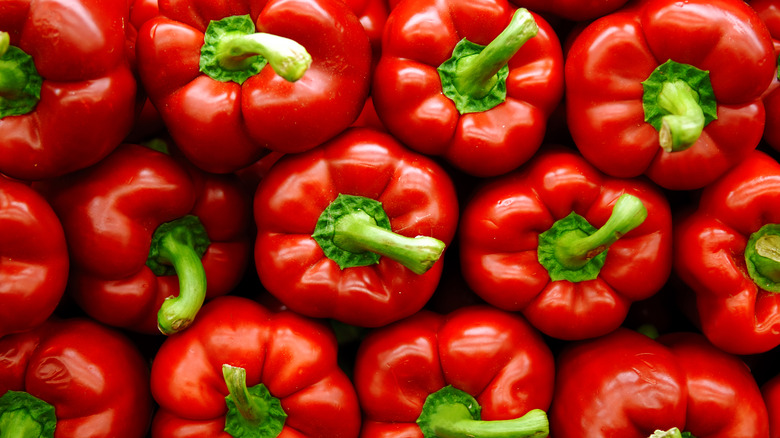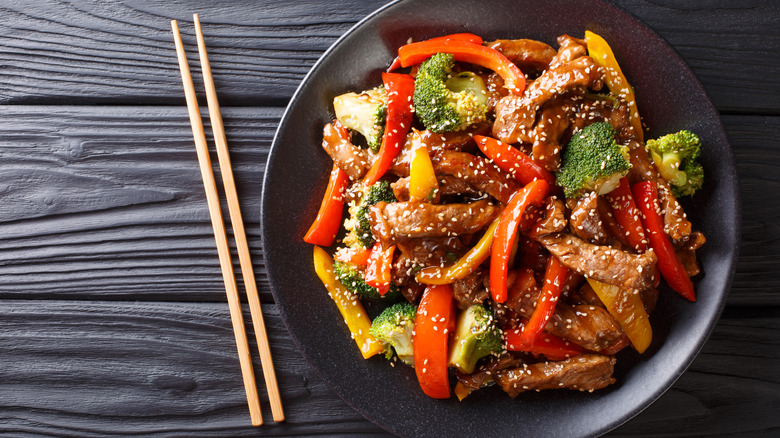The Vegetable That Has 3 Times More Vitamin C Than An Orange
What's the first thing that comes to mind when considering a good food source for vitamin C? If you're like countless others, it's probably oranges or similar citrus fruits. You'd be on the right track since medium-size oranges carry about 70 milligrams of vitamin C. But citrus is far from topping Mother Nature's list of ascorbic acid, the less common name for the crucial vitamin.
Since the human body is unable to store ascorbic acid, it must come from supplements or, ideally, from the foods we eat. Vegetables and fruits, including broccoli, strawberries, and tomatoes, are widely known to harbor healthy amounts — but there's a firm, chunky, sweet veggie delight leading the vitamin C parade. It's the bold and bright red bell pepper.
As it marches front and center, the red bell pepper carries a stunning 190 mg of vitamin C, as measured in a cup of diced peppers. That's almost triple the amount of the medium-sized orange and nearly twice that of a cup of strawberries, according to Chicago Health.
How vitamin C benefits your body
It may seem that vitamin C is just one of many vital nutrients, but it brings a lot to the table. This essential vitamin, one of 13 designated as crucial for proper body function, more than carries its weight, from healing wounds to bolstering healthy teeth and bones, absorbing non-heme sourced iron, and repairing tissues throughout the body, explains the Mount Sinai health system. It enables collagen protein production for healthy skin, blood vessels, cartilage, and bones.
Vitamin C is also, importantly, an antioxidant that can boost the immune system and inhibit the damaging effects of free radicals. Over time, free radicals can build up inside body cells, damaging DNA, proteins, and lipids — and potentially increasing the risk of cancer and various other diseases, including arthritis and heart disease. Healthline adds to the list of vitamin C benefits, including positive effects on aging, such as guarding memory and thought processes over time.
All that goodness makes eating a simple and delicious red bell pepper an instant "no-brainer."
Does cooking bell peppers reduce vitamin C content?
Now comes the question of how to ensure maximum absorption of that valuable ascorbic acid tucked inside bell peppers. Red is the ultimate giver of C-goodness, but notably, the orange and yellow bell pepper varieties also harbor elevated quantities. Even the green version, at 120 mg, provides about 130% of the U.S. recommended daily amount (RDA) of vitamin C.
Eating raw red bell peppers ensures full benefits since cooking them causes some loss of the valuable vitamin C. This is especially true with water-based cooking methods such as boiling and steaming since the vitamins wash out into the hot water. However, cooking has a positive aspect as well. Heat can loosen the cell walls of the pepper, allowing easier absorption of the health-enhancing nutrients, including antioxidant carotenoids nestled within.
To lessen the loss of vitamin C from cooking, keep the heat lower than 86 degrees Fahrenheit and subject the red bell peppers to heat for a maximum of 10 minutes. Try quick stir-frying or lighting roasting them over low heat.



